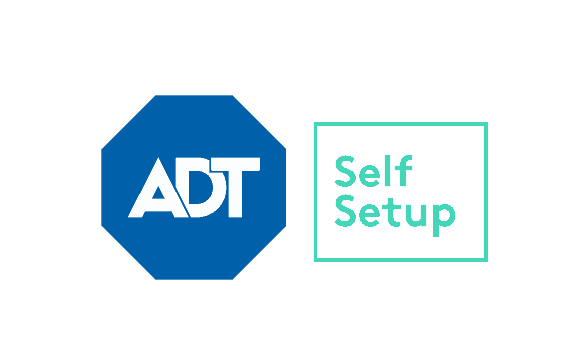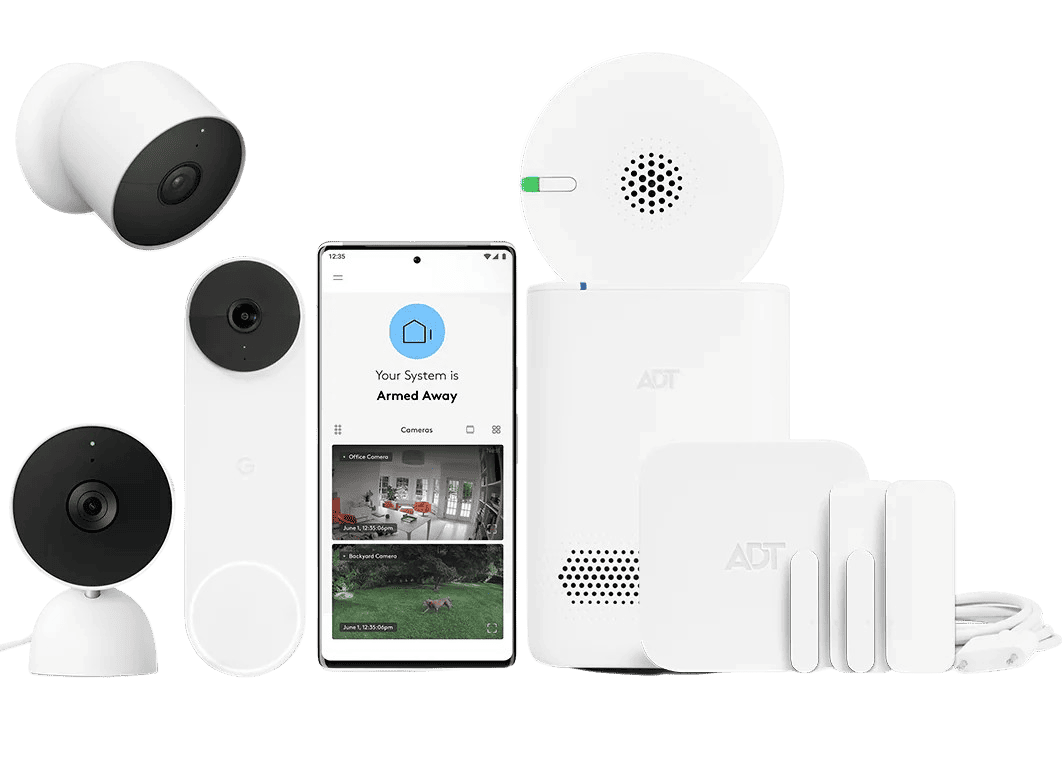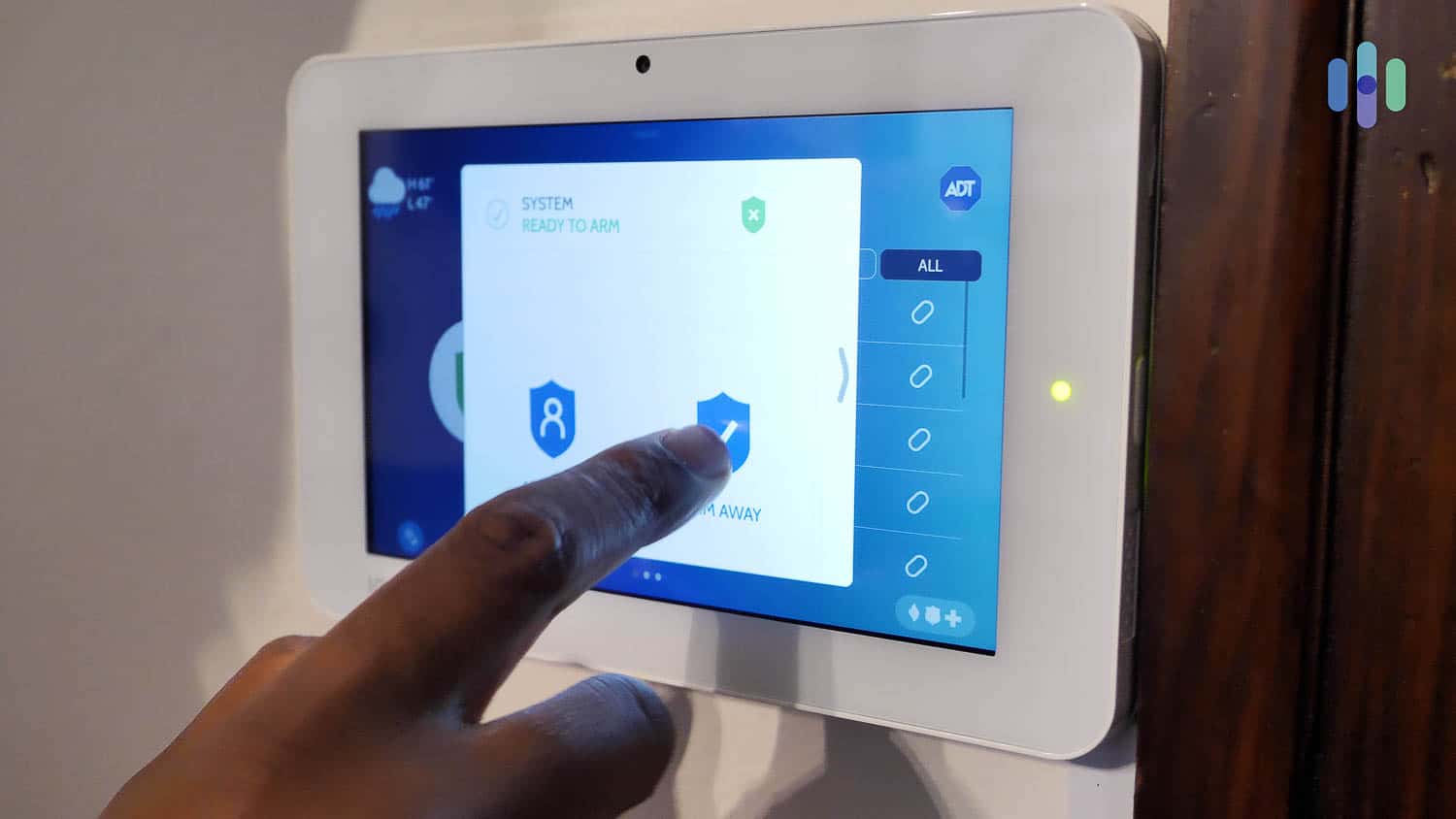ADT Self Setup Review and Cost
With equipment and monitoring similar to professionally installed ADT systems, ADT Self Setup is an excellent pick for DIY home security.
 Paul Frew, Home and Digital Security Expert
&
Paul Frew, Home and Digital Security Expert
&
 Gene Petrino, Home Security Expert
Last Updated on Nov 24, 2025
Gene Petrino, Home Security Expert
Last Updated on Nov 24, 2025
What We Like
- Easy DIY setup: ADT Self Setup offers top-of-the-line equipment from one of the top home security brands, but with the advantage of easy DIY setup that anyone can do.
- Award-winning professional monitoring: ADT is known for its state-of-the-art monitoring facilities, and it’s those same facilities that monitor ADT Self Setup.
- Google Nest Cam integrations: Security cameras for ADT Self Setup come from none other than Google Nest, maker of some of the best security cameras on the market.
What We Don't Like
- Limited smart home automations: While the latest Self Setup system now works with more smart home devices from Google Nest and beyond, it’s not as smart home-capable as other options like abode and Vivint.
- Somewhat pricey monitoring costs: ADT Self Setup offers monitoring starting at $24.99 per month. It’s pricier than most DIY options, including SimpliSafe and Cove.
- Basic hub lacks a touch screen control panel: Unlike with other systems, the basic ADT base station doesn’t have a touch screen. If you want a touchscreen hub, you’ll have to shell out for a Google Nest Hub or Nest Hub Max.
Bottom Line
ADT’s currently offering 60 percent off any of their packages that include any cameras or video doorbells. That means you can get a full Video Essentials package for just $20 more than a Google Nest Doorbell on its own.
Although ADT has been synonymous with professional installation for decades, they’ve shifted into a DIY-first company with their Self Setup line. This came alongside a partnership with Google Nest. That collaboration helped with the transition as Google makes some of the most user-friendly smart devices on the market.
With their latest generation of equipment, ADT has essentially merged Self Setup with their ADT Plus system, streamlining their entire product ecosystem. This unified approach means DIY customers get the same high-quality sensors and features as professionally installed systems.
>> Related reading: Compare Frontpoint vs. ADT Self Setup
ADT Self Setup vs. Blue by ADT
Because Self Setup is a relatively new line of products from ADT, it is helpful to look at a cautionary tale in the form of Blue by ADT, a line of products that was acquired by the company and then discontinued.
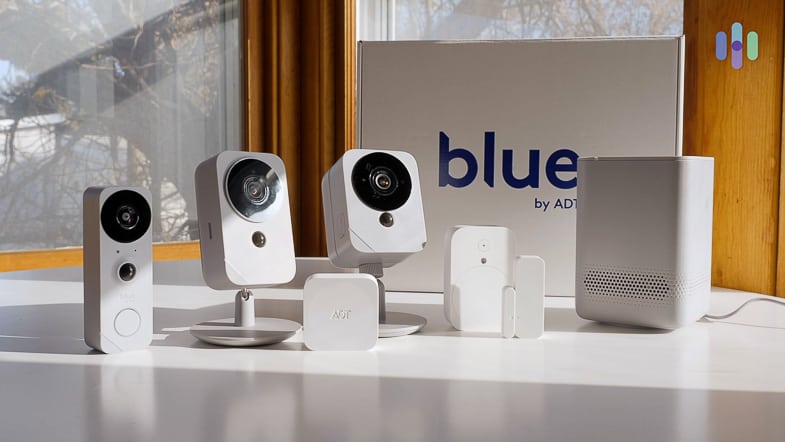
ADT acquired Blue in 2019, and unfortunately, the product line experienced a drop-off in quality. To its credit, ADT low-key acknowledged this misstep and dropped Blue. Not looking to repeat the mistake, ADT went for a sure bet when it rolled Google Nest products into its Self Setup security system.
In addition to selling Nest products, ADT also launched its ADT Plus smart security system. This system included a redesigned base station and sensors, which could be used for both a DIY setup and a professional installation. While Self Setup and ADT Plus were once considered in different silos, they are now essentially similar. We see this as a smart move because it puts Self Setup on par with the classic lineup and makes the entire ecosystem more streamlined.
FYI: ADT will continue to support and monitor existing Blue by ADT and first-gen ADT Self Setup security systems. Moving forward, however, security system shoppers who want to DIY the installation will have to purchase an ADT Plus system and choose DIY installation.
ADT Self Setup: How’s The Setup Process?
ADT Self Setup earned its spot on our list of the best DIY security systems thanks to its streamlined installation process. Unlike competitors that require juggling multiple devices during setup, ADT’s approach centers entirely around the ADT+ app. That makes installation refreshingly simple.
>> Compare: ADT Vs. Frontpoint
Since ADT didn’t have those hurdles, we were able to install the system quicker than SimpliSafe or Cove. It also helped that our ADT system was smaller. Here’s a quick comparison of installation times between ADT, SimpliSafe and Cove:
| Top DIY Security Systems | Installation Time | System Size |
|---|---|---|
| ADT Self Setup | 15 minutes | 11-piece |
| SimpliSafe | 30 minutes | 14-piece |
| Cove | 20 minutes | 14-piece |
The first component we set up was the hub. We paired it to our ADT+ app and then connected it to Wi-Fi. That took about two minutes, including the time we waited as it booted up for the first time. After that, we paired each sensor to the hub by taking off their battery tabs.
FYI: While our system used the screenless bass hub, ADT now offers the Google Nest Hub and Nest Hub Max. Both devices have a touch screen and voice control capabilities. The Nest Hub Max has a built-in camera.
Installing the sensors was just as quick and easy. They came with a peel-and-stick adhesive backing so there’s no drilling required, making ADT Self Setup a solid security system for renters. Just make sure to clean the surface before sticking the sensors so they don’t easily fall off. All in all, sensor installation took us less than five minutes.
>> Related reading: ADT Self Setup vs. Vivint
Pro Tip: The latest generation ADT Base Station now supports both 2.4 GHz and 5 GHz Wi-Fi networks. We typically recommend using your 5 GHz band for its faster speeds. That said, the 2.4 GHz band provides a farther range and better wall penetration making it good for spread out systems.
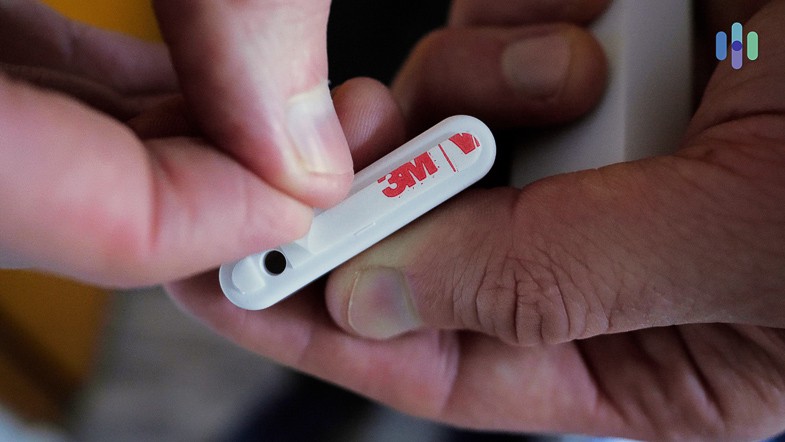
Next, we set up our Google Nest Cams. The old ADT security cameras are no longer available, which is a good thing. We’ve reviewed the Nest Cams and find that they perform better than ADT’s models. Plus, we were able to pair the cameras with the ADT+ app to watch live and recorded footage straight from the very app we use to monitor our security system.
The Google Nest Cam with Floodlights required more DIY skills to install. We had to hardwire it to a junction box, which took some know-how. That’s why ADT recommends professional installation specifically for this component. You could also hire a licensed electrician to handle just this portion.
Pro Tip: If you buy the Google Nest Cam (battery), charge it overnight before setting it up.
>> Read more: The Security Systems With The Best Apps
ADT Self Setup Equipment: A Closer Look
The ADT Self Setup security system offers a robust selection of equipment, slightly more than the ADT Control system we reviewed in the past. While it doesn’t include devices that veer closer to the smart home side of the spectrum, such as garage door sensors, we generally liked the selection. Here’s a look at some of the components we received.
The Base Station
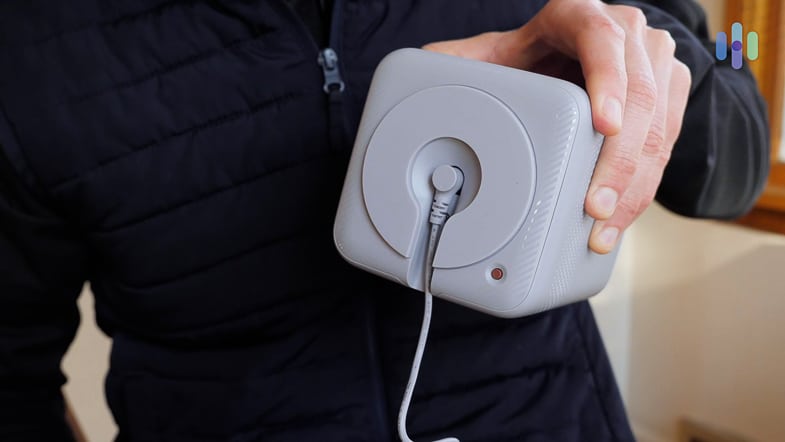
The base station for our Self Setup system connected to our Wi-Fi. Because it acts as a hub for all of your devices, including the Google Nest cams, we recommend placing it right next to your router. The last thing you want is an unreliable connection during an emergency.
FYI: Previous generations of the ADT Base Station could only connect to 2.4 GHz networks, but the latest generation can connect to 5 GHz Wi-Fi.
While we appreciate the aesthetics of the new base station, we are partial to touchscreen displays. ADT’s latest system doesn’t even offer one as an add-on. We will say we like the new base station with its LED ring that changes colors based on the system status. It adds a nice modern touch while making it easy to check the status of your system at a glance.
More importantly, it still has the functionalities we loved from the old ADT Self Setup base station. It has a 24-hour battery backup, a 4G/LTE cellular chip for cellular backup, and a built-in siren. We wish ADT improved the siren though. It’s plenty loud at 85 decibels, but we can barely hear it from the second floor or when in the bedroom or shower.
The Door/Window Sensors
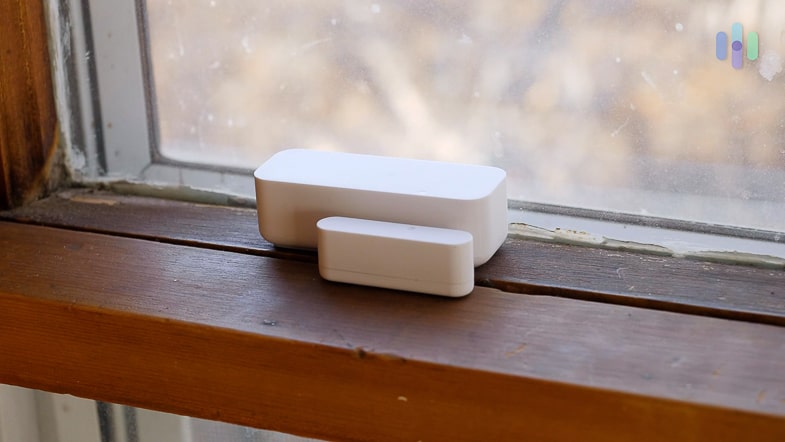
Like most modern security systems, ADT’s entry sensors work on both doors and windows. That’ll catch the approximately 81 percent of burglars who enter through doors or windows at ground level.1 We liked that the sensors are very discreet, even smaller than the ones from the Ring Alarm system we reviewed. After they were installed, we could monitor and manage them with the ADT+ app.
The battery life is one area where ADT could improve. Entry sensor batteries only last two years, whereas most competitors can last up to five years. To make that low battery life worth it, we recommend the premium door/window sensor at $40 for high-risk entry points. It adds a bypass button and vibration detection for attempted forced entry.
Pro Tip: The door/window sensors from ADT use a CR123A coin cell battery. Keep a few of those stored so that you have replacement batteries in case your sensors run out of juice – even in the middle of the night.
The Motion Sensors
ADT’s PIR motion sensor detects anything with body heat that moves. If you have small children or pets, we recommend lowering the sensitivity on the back of the sensor so that you don’t get false alarms. At the lowest setting, ADT’s motion sensor can ignore pets up to 85 pounds. We have ADT as one of the best security systems for pet owners in 2025 largely because of the adjustable sensitivity of its motion sensors.
We also recommend placing the sensor strategically to further reduce false alarms. Keep it away from direct sunlight and appliances that emit heat (like microwave ovens). And if possible, place it at least six feet off the ground, angled slightly downwards to maximize its field of view.
Pro Tip: One trick we learned over the years is that if you keep getting false alarms from your motion sensors because of pets, turning it upside down can help. But if you do that, make sure to place the sensor closer to the ground (around chest level). Most motion sensors have a detection range angled slightly downwards.
The Smoke Detector
Besides guarding your home from intrusion, ADT Self Setup offers a couple of sensors for life and home safety. The first one is the battery-powered smoke detector. It sounds a loud alarm when it detects smoke or a rapid rise in temperature.
What sets ADT’s smoke detector apart is its smart integration capabilities. It can also trigger automated responses. We set ours up to turn on our smart lights to illuminate escape routes, unlock our smart locks for emergency exit, and shut down our HVAC systems to prevent smoke circulation throughout your home.
FYI: There’s also a dedicated carbon monoxide sensor that detects gas leaks, as well as a combination sensor that detects both smoke and gas.
The Flood & Temperature Sensor
The other home safety sensor from ADT Self Setup is the flood & temperature sensor, which protects your home from water leaks and frozen pipes. It’s also wireless and battery-powered, so you can place it in hard-to-reach places like under your sink or in flood prone areas in your basement.
The Google Nest Cam (battery)
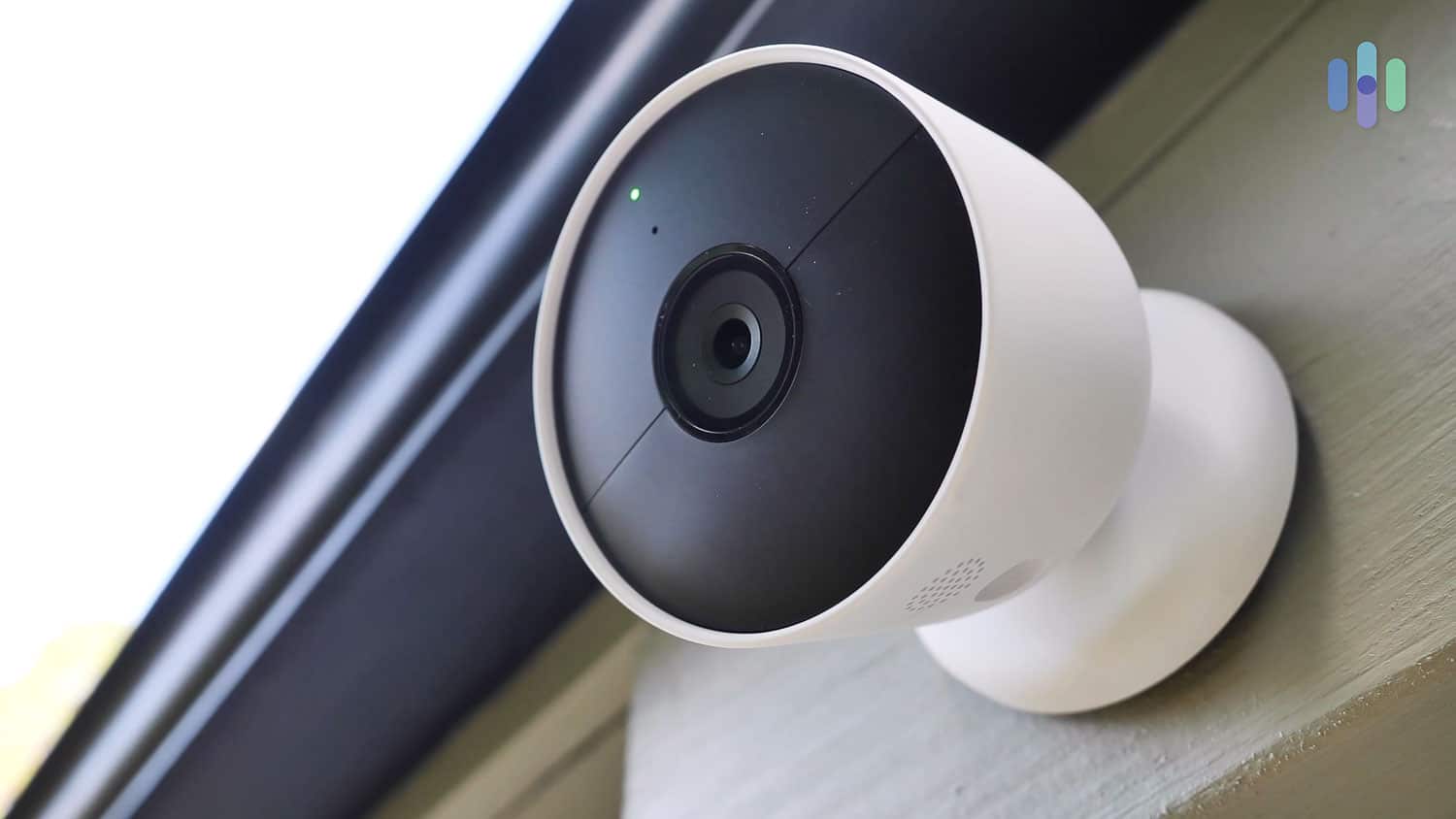
We reviewed the Nest Cam (battery) as a standalone security camera, so head over there for a more detailed look at its features and specs. To summarize, it’s a battery-powered weatherproof camera that has a 1080p resolution with HDR, impressive night vision, person detection, and facial recognition (a.k.a. Familiar Face alerts).
When paired with ADT monitoring, Nest Cams enable video verification for alarms. That means ADT monitoring agents can use Nest Cam footage to verify an emergency, identify the type of emergency and send responders accordingly. If agents believe it’s a false alarm, they’ll reach out to you to confirm.
The Google Nest Cam (wired)
At $99, the wired indoor Nest Cam is the most affordable camera in ADT’s lineup. It’s not the cheapest camera on the market by any means, but it offers great value. You still get Google’s AI-powered facial recognition, which you won’t find elsewhere. It also supports ADT’s video verification, improving your overall monitoring.
The Google Nest Doorbell (battery)
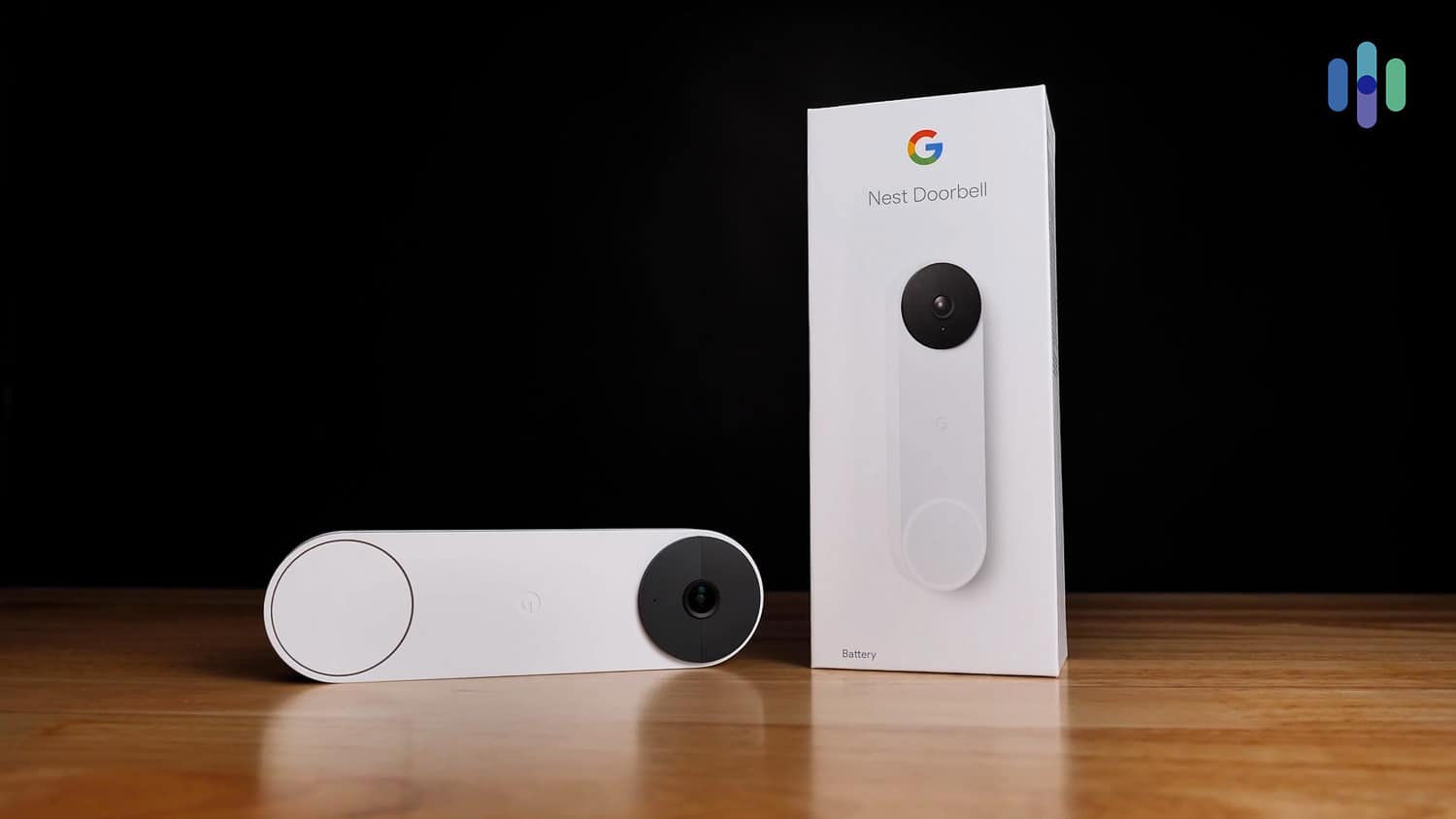
For front door security, ADT Self Setup offers the Google Nest Doorbell (battery) we reviewed here. Since it doesn’t require wiring, it goes with the theme of ADT Self Setup’s easy-to-install DIY equipment. It takes only a few minutes to install, and it comes with all the mounting accessories you’ll need.
Feature-wise, the Google Nest Doorbell is a knockout. It has HDR night vision for crisp, clear videos at night, a tall viewing angle that offers a head-to-toe view of guests, and it can differentiate between people, animals, vehicles, and packages.
Like all the other Google Nest cameras offered by ADT Self Setup, footage from the Google Nest Doorbell can be used for video verification.
ADT Self Setup and Home Automation
The Google-ADT partnership creates a powerful smart home ecosystem that goes well beyond basic security. With deep Google Assistant integration and expanding Matter support, ADT Self Setup can serve as the backbone of a comprehensive smart home setup.
For starters, you get voice control through the Google Nest smart speakers and displays. Some models available on ADT’s website include:
- Google Nest Mini (2nd gen)
- Google Nest Hub (2nd gen)
- Google Nest Hub Max
Those devices provide control over anything that works with Google Assistant, whether or not they are compatible with ADT Self Setup. Let’s say you have smart locks that are not ADT-compatible, but work with Google. While you won’t be able to control it with the ADT+ app, you can with Google Assistant.
Next, ADT Self Setup offers the Google Nest Thermostat, the OG smart thermostat that put Nest on the map. It controls your home’s temperature and offers energy-saving features. Since it’s a direct integration, you can control your Nest Thermostat from the ADT+ app.
Lastly, to power your Wi-Fi connected smart devices, ADT Self Setup offers Google Nest Wifi router and point, which is a mesh-type router system with a decent range and bandwidth. Plus, Nest Wifi points have built-in smart speakers, so you can access Google Assistant through them as well.
ADT Self Setup supports the Z-Wave protocol, which allows it to connect with thousands of third-party devices. The company has also confirmed they’re working on Matter support. Once that’s released, ADT will become compatible with virtually all major smart home platforms including Apple HomeKit, Amazon Alexa, and Samsung SmartThings.
The ADT+ App
Of course, ADT Self Setup needs a capable app to tie the system together. That’s where the ADT+ app comes in.
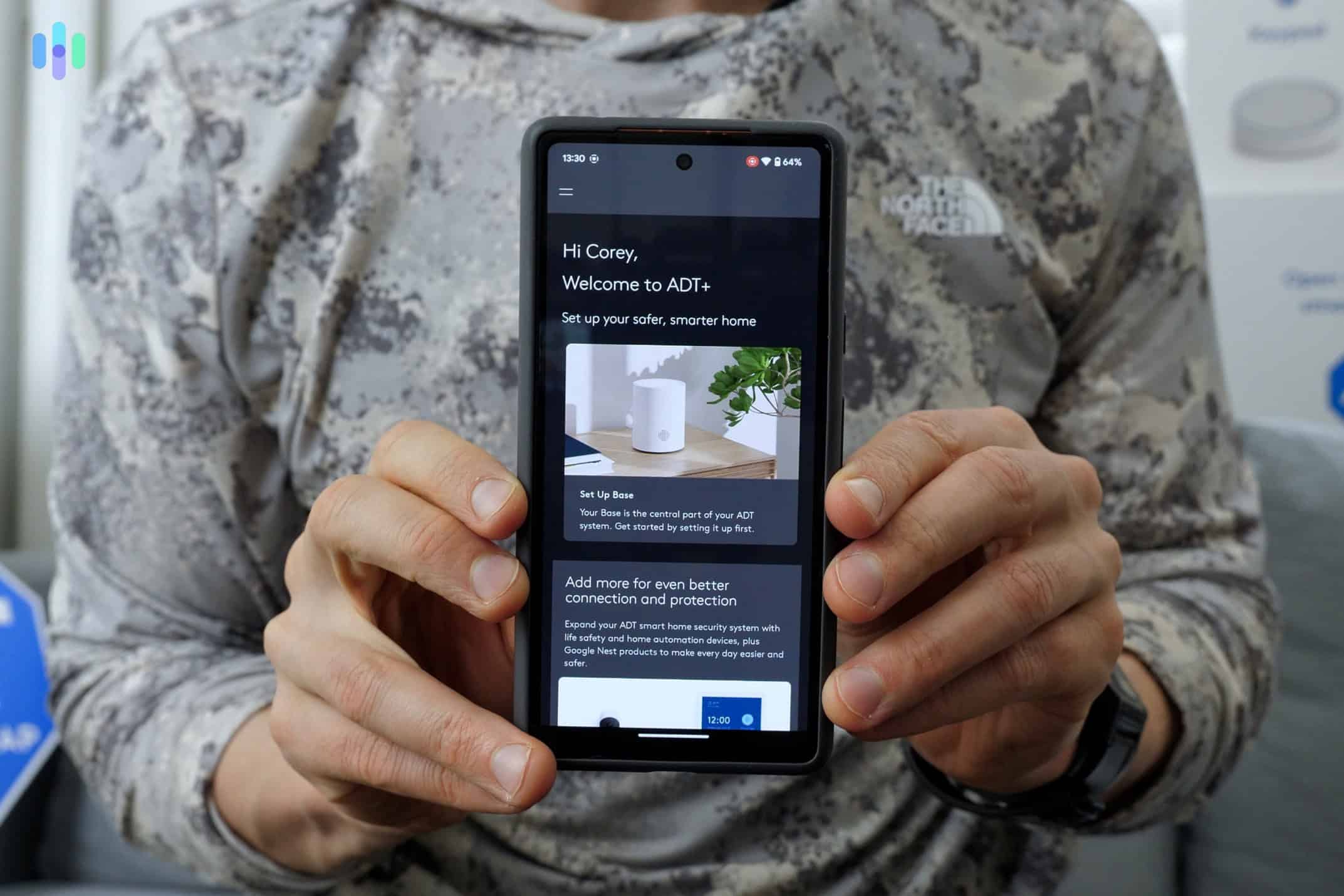
The ADT+ offers native controls of Google Nest equipment. You probably won’t even need the Nest app on your phone, as you can view your cameras, review recordings, control your thermostat, and more using just the ADT+ app.
If you have other home automation devices paired with ADT Self Setup, you can control them too using the app. You can set up home automation with rules, schedules, and scenes. Turn up your HVAC when someone comes home, or turn on your perimeter lights when someone trespasses.
The app impressed us with its advanced security and personalization features. For example, the Auto Stay feature automatically leaves our motion sensors disarmed if our doors and windows are closed. That way, we don’t need to worry about accidentally triggering a motion sensor when we get up for our midnight snack.
Trusted Neighbor
One of ADT’s new features is called Trusted Neighbor. It was designed to let trusted people into your house automatically by using facial recognition and other signals to verify their identity. For example, if you have a dog walker that comes daily to pick up your pets, you can make ADT open the door and disarm the system to let them in without hassle.
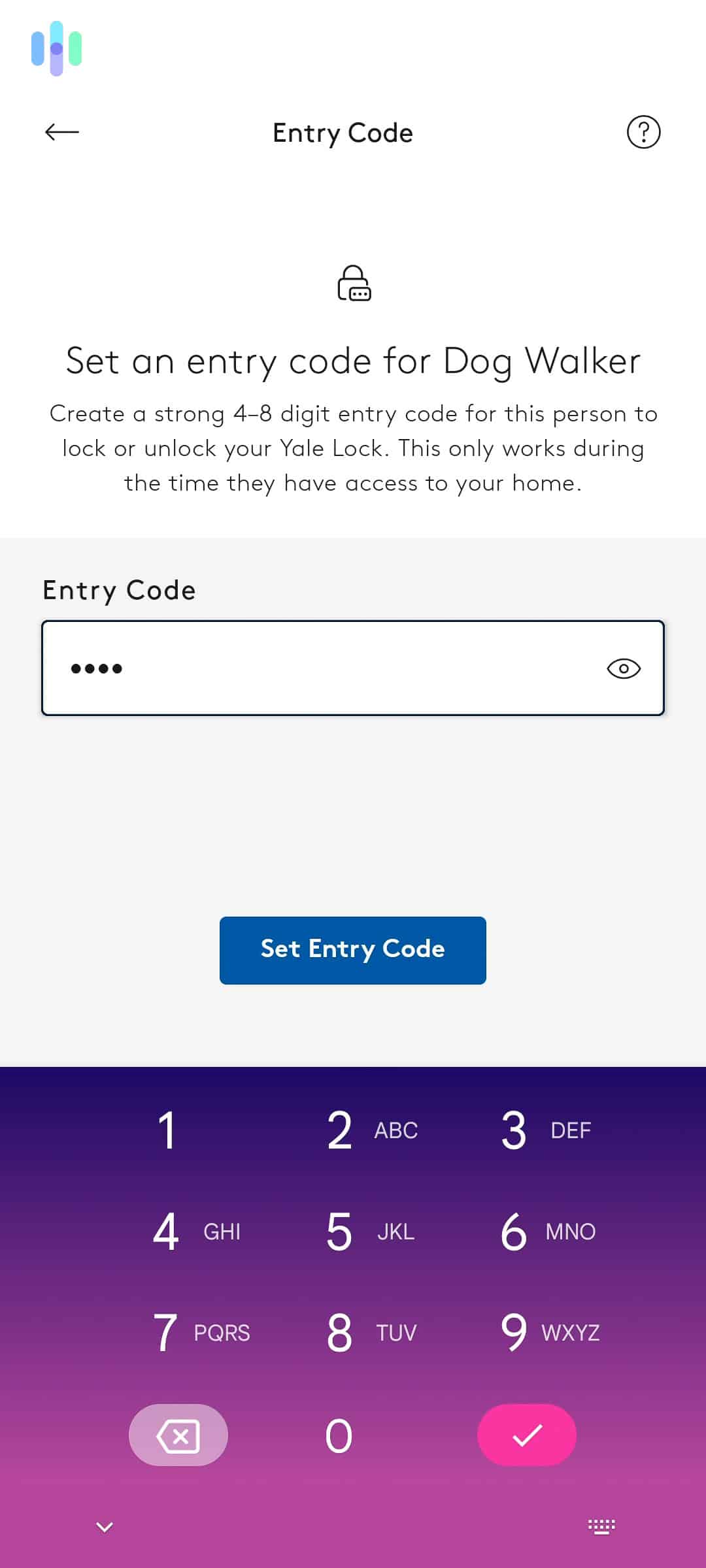
Trusted Neighbor requires several key components, namely, a Nest Cam placed outdoors to identify people’s faces, a compatible smart lock to open the door automatically, the ADT+ app installed on the guest’s phone, and an indoor Nest Cam to record their activity inside your house.
Here’s how it works:
- Introduce your trusted neighbor to your Nest Cam by letting the Nest Cam see their face and tagging them.
- Set up your Trusted Neighbor rules i.e. “When this person is seen between 3 p.m. and 4 p.m., activate Trusted Neighbor.”
- Have your trusted neighbor install the ADT+ app. They need it to unlock the door and disarm the system during their visits.
During our tests of Trusted Neighbor, we found it surprisingly reliable. As one of the top facial recognition algorithms, it’s over 99.5 percent accurate.2 Its custom rules — like emergency access during smoke alarm activation — add real value. We also appreciate the detailed activity logs that show exactly when trusted individuals accessed your home.
ADT Self Setup: How Much Does It All Cost?
How much is it going to cost to set up an ADT Self Setup system? There are two factors here: The equipment cost and the monitoring cost.
ADT Self Setup Equipment Cost
For the equipment, expect to spend at least $269 to get started. That’s for the Build Your Own system, which includes just the base station and a regular door/window sensor. From there, you’re going to purchase additional components that suit your security needs.
| ADT Self Setup equipment | Price |
|---|---|
| Entry sensor | $20 |
| Premium door/window sensor | $40 |
| Motion sensor | $40 |
| Smoke detector | $60 |
| CO detector | $60 |
| Heat detector | $60 |
| Combination smoke/CO detector | $115 |
| Water & temperature sensor | $60 |
| Glass break sensor | $50 |
| Keypad | $99 |
| Keychain remote | $20 |
| Google Nest Cam (battery) | $179.99 |
| Google Nest Cam (wired) | $99.99 |
| Google Nest Doorbell (battery) | $179.99 |
| Nest Cam with Floodlights | $279.99 |
| Google Nest Hub (2nd gen) | $99.99 |
| Google Nest Thermostat | $129.99 |
| Google Nest Learning Thermostat | $279.99 |
| Yale Smart Lock | $189.99 |
| Yale Assure Lock 2 Touch | $299.99 |
| Appliance module | $50 |
| Garage door opener | $100 |
| A19 smart bulb | $30 |
ADT currently offers six pre-configured packages that frequently go on sale during major shopping periods. The packages — Security Starter, Video Essentials, Front Door Protection, Outdoor Video, Total Safety, and Life Safety — range from $349 to $1,593 MSRP. Sales typically cut these prices by up to 60 percent off during Black Friday and other peak shopping times.
ADT Self Setup Professional Monitoring Cost
ADT requires at least one month of professional monitoring with the purchase of any package. Sensor-only packages must come with at least one month of Secure monitoring. Packages with at least one camera must include a month of Complete monitoring.
At $24.99 per month, the Secure Monitoring plan is designed to support systems without video cameras. It includes 24/7 professional monitoring, cellular backup, access to the ADT+ app, text alerts, and voice control. This plan doesn’t include smart home automation or video verification from monitoring agents.
At $39.99, the Complete Monitoring plan is meant for systems with video cameras. It adds on smart home automations, video verifications, and 24/7 live video monitoring. For an extra $7 per month, you can add 10 days of continuous video recording and 60-day event-based video history for your Nest cameras.
FYI: : ADT offers an often-overlooked Smart plan at $29.99 per month. It adds home automation to the Secure plan. This middle tier is perfect if you want smart home features without cameras.
Find out how ADT Self Setup compares to other home security systems
We tested ADT Self Setup and compared it side-by-side with other brands to give you the full picture.
Our ADT Self Setup Research and Data
The following is the data and research conducted for this review by our industry-experts. Learn More.
Encryption
| In Transit | Yes |
|---|---|
| At rest? | Yes |
| All network communications and capabilities? | Yes |
Security Updates
| Automatic, regular software/ firmware updates? | No |
|---|---|
| Product available to use during updates? | Yes |
Passwords
| Mandatory password? | Yes |
|---|---|
| Two-Factor authentication? | No |
| Multi-Factor authentication? | No |
Vulnerability Management
| Point of contact for reporting vulnerabilities? | Live chat support |
|---|---|
| Bug bounty program? | No |
Privacy Policy
| Link | https://www.adt.com/about-adt/legal/privacy-policy |
|---|---|
| Specific to device? | Yes |
| Readable? | Yes |
| What data they log | Name or business name, home address, phone number, email address, payment information, date of birth, social security number, personal identification code. Some devices may collect audio, video, and still-image recordings from your monitoring devices, geolocation and GPS information including physical location by using satellite, cell phone tower or Wi-Fi signals. Motion detection, accelerometer activity and climate conditions surrounding your devices, monitoring ievent information, IP address, internet service provider, device data,and cookies. |
| What data they don’t log | n/a |
| Can you delete your data? | Yes |
| Third-party sharing policies | Shares data with third-parties |
Surveillance
| Log camera device/ app footage | Yes |
|---|---|
| Log microphone device/ app | Yes |
| Location tracking device/ app | Yes |
Parental Controls
| Are there parental controls? | No |
|---|
Company History
| Any security breaches/ surveillance issues in past? | No |
|---|---|
| Did they do anything to fix it? | n/a |
Additional Security Features
| Anything like privacy shutters, privacy zones, etc.? | Can set up privacy zones |
|---|
The Verdict: Does ADT Self Setup Have Any Downsides?
As far as DIY security systems go, ADT Self Setup is one of the top options right now. We especially like that it has ADT’s backing, which means it can offer high-quality service similar to that of professionally installed security systems.
The selection of equipment is great: ADT Self Setup uses hardware from ADT and Google Nest, two smart home and home security powerhouses. And the ADT+ app? It’s simply the cherry on top.
However, pricing remains a consideration. The entry-level camera costs $99.99, which positions ADT above budget-friendly alternatives. Additionally, the lack of a touchscreen hub in base packages may disappoint users accustomed to visual interfaces from competitors like Vivint or Ring Alarm Pro.
For monitoring, ADT’s rates start at $24.99 monthly, which sits above DIY competitors like SimpliSafe ($21.99) and Cove ($19.99). However, when you factor in ADT’s professional monitoring quality, video verification capabilities, and the included Nest Aware subscription with the Complete plan, the value proposition becomes clearer.
Overall, it’s a great security system, but if the downsides we mentioned are deal-breakers for you, take a look at our top-rated SimpliSafe DIY security system review. SimpliSafe has been around for over a decade, it offers more equipment options in terms of sensors, and it has more affordable monitoring plans.
ADT Self Setup FAQs
Now let’s answer some Qs about the ADT Self Setup security system.
-
Is ADT Self Setup a rebranding of Blue by ADT?
ADT Self Setup is a rebranding of Blue by ADT, but it also offers new features, among them, a closer integration with Google Nest, deeper smart home integrations, and a new app called ADT+.
-
Does ADT Self Setup have financing plans?
Yes. With a minimum purchase of $269, you can get a 36-month financing contract with 0% interest. Terms and conditions do apply.
-
Can ADT monitoring centers see my camera footage?
Yes, but only with the Complete Monitoring plan. ADT monitoring centers can briefly access your recordings at the time of alerts to verify whether or not there’s a real emergency to cut down on false alarms and improve alert response times for real emergencies.
-
Does ADT Self Setup need Wi-Fi?
Yes, the ADT Self Setup base station, also known as Smart Home Hub, connects to the internet over Wi-Fi. It uses the Wi-Fi connection to send alerts.
-
Can I build my own ADT Self Setup package?
Yes. In addition to pre-made packages, ADT lets you build your own system, starting with the base station and one entry sensor for $269. This is a great way to get exactly the coverage you need for a home of any size.
-
International Association of Certified Home Inspectors. (2025). Burglar-Resistant Homes.
nachi.org/burglar-resistant.htm -
SIA. (2022). What Science Really Says About Facial Recognition Accuracy and Bias Concerns.
securityindustry.org/2022/07/23/what-science-really-says-about-facial-recognition-accuracy-and-bias-concerns/

